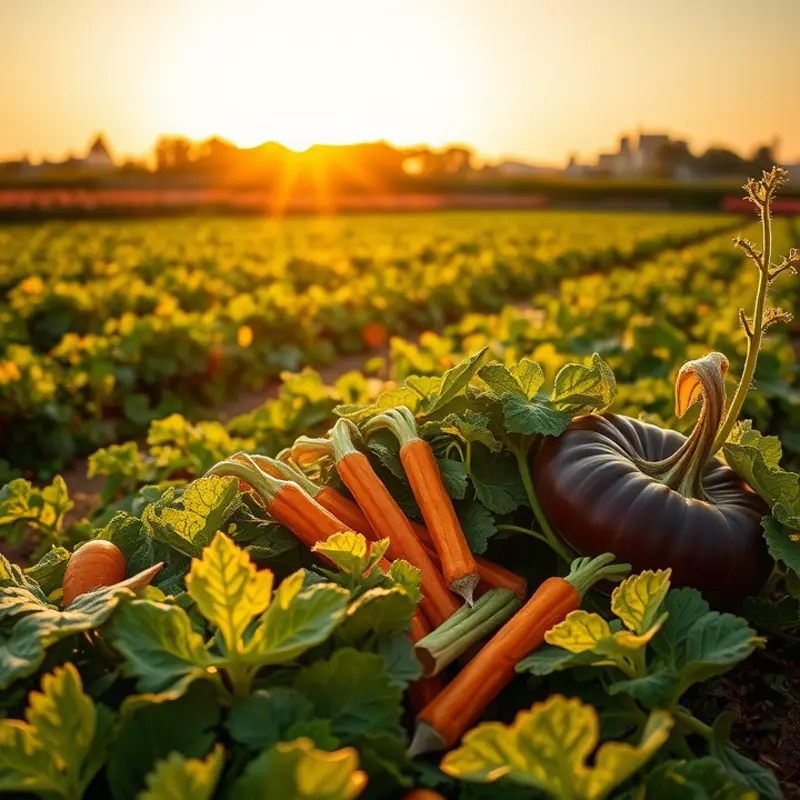Regional preservation methods connect us to the essence of culinary traditions, reflecting the unique cultures and histories behind each gastronomic delight. From fermented delicacies to sun-dried fruits, these time-honored practices not only extend the shelf life of ingredients but also enrich our culinary experiences. Join us as we journey through fascinating preservation techniques that celebrate diverse cultures while tantalizing the taste buds of food enthusiasts and curiosities alike.
Fermentation: A Flavorful Time Capsule

Fermentation is a testament to the ingenuity and traditions of cultures worldwide. It is a natural process that uses microorganisms, like bacteria and yeast, to transform food. More than just a preservation method, it enhances flavors and creates new textures. In Korea, for instance, kimchi is more than a dish—it’s a symbol of cultural resilience and community. Families gather to prepare this spicy, fermented cabbage, celebrating their heritage with each batch. Kimchi is revered not just for its tangy flavor but for its role in connecting generations.
In Germany, sauerkraut takes center stage. Cabbage, often abundant, is fermented with salt to produce a sour, crunchy accompaniment to meals. This process, called lacto-fermentation, involves lactic acid bacteria breaking down sugars in the cabbage. This not only preserves the vegetable but enriches its nutritional profile, enhancing its vitamin C content. Sauerkraut’s appeal spreads beyond flavor; it embodies the communal aspect of shared meals and local gatherings.
The science behind fermentation is fascinating. As an anaerobic process, it transforms raw ingredients into complex, flavorful foods. Yeasts convert sugars into alcohol and carbon dioxide, while bacteria produce lactic acid, acids, and alcohol, lowering the food’s pH and deterring spoilage. This interaction not only extends the shelf life but also makes food more digestible, often introducing beneficial probiotics. These probiotics, crucial for gut health, open the doors to varied diets, offering a way to consume dairy through non-dairy probiotics as detailed in this guide on probiotic substitutes.
Globally, communities embrace the art of fermentation with distinct, flavorful results. In Japan, miso and soy sauce offer a staple umami kick, fermented through a unique blend of soybeans and koji mold. In Ethiopia, the injera represents a quintessential part of cultural identity, fermented to deliver its characteristic tang and spongy texture.
For those eager to experiment at home, consider crafting classic kimchi. Start with Napa cabbage and soak it in saltwater to draw out moisture. Prepare a paste of fish sauce, garlic, ginger, and Korean red pepper flakes. Massage the mix into cabbage leaves, then pack it tightly into jars and allow nature to work its magic over several days. Alternatively, sauerkraut offers a simpler start. Shred cabbage, mix with salt, and weigh it down in a jar until the brine covers the cabbage completely. Ferment for weeks, tasting as flavors develop.
The world of fermentation is rich and viable for culinary innovation. It marries tradition with science, revealing a world that respects the heritage of the past while offering a sustainable, flavorful tomorrow.
Drying and Smoking: Flavors of Land and Sea

The ancient techniques of drying and smoking represent humanity’s enduring ingenuity with food preservation. These methods, developed thousands of years ago, have adapted to climate, resources, and cultural palate. Their essence lies in both extending food’s shelf life and transforming its flavor profile, creating unique gastronomic experiences.
In Scandinavia, the practice of drying and smoking fish has existed for centuries. During the long, frigid winters, these methods guaranteed sustenance when fresh fish was unattainable. Cod is a popular choice, often salted before being left to dry in the brisk coastal air. This process, while simple, results in a fish with a concentrated umami flavor and chewy texture that becomes the star ingredient in dishes like lutefisk or bacalhau.
In contrast, the American West developed its own preservation tradition: jerky. Driven by the need to sustain long cattle drives and frontier adventures, pioneers crafted this portable, protein-rich snack from beef. The process involves marinating strips of meat in a blend of spices and then smoking them over low heat. The result is a savory, robust treat that’s full of history.
Yet, the allure of drying and smoking isn’t limited to land. On the Japanese coast, fish and seaweed are often sun-dried, exploiting the natural bounty of the sea. Kombu and bonito flakes, dried to perfection, are integral to the dashi broth—a cornerstone of Japanese cuisine. This slow preservation draws out the umami flavor, exemplifying how drying magnifies subtle taste nuances.
These preservation techniques have not only endured but evolved. Modern culinary practices incorporate dried and smoked elements for their bold flavors. For those interested in experimenting with these techniques at home, understanding safer storage practices can ensure quality results (Safer Storage of Sauces).
The intimacy of drying and smoking techniques connects us with past generations’ wisdom and resourcefulness. While technology has provided new ways to preserve food, these age-old methods continue to resonate in contemporary cuisine, offering a taste of history in every bite. Embedded within them is a celebration of survival, creativity, and taste that persists across cultures and time.
Final words
Regional preservation methods offer a window into the heart of culinary traditions, celebrating the connection between food, culture, and community. From fermentation that builds layers of flavor to drying techniques that encapsulate the essence of the harvest, these practices remind us of our relationship with the ingredients we cherish. By embracing these time-tested methods, we not only honor culinary heritage but also gain a deeper appreciation for global flavors. Let the art of regional preservation inspire your next culinary adventure, inviting you to experience unique tastes while fostering a respect for diverse food cultures.








